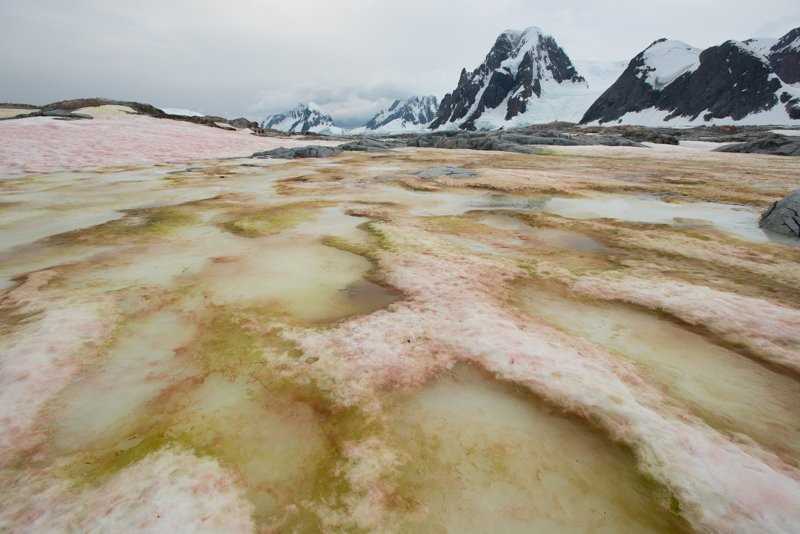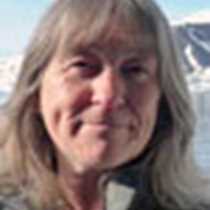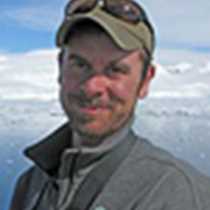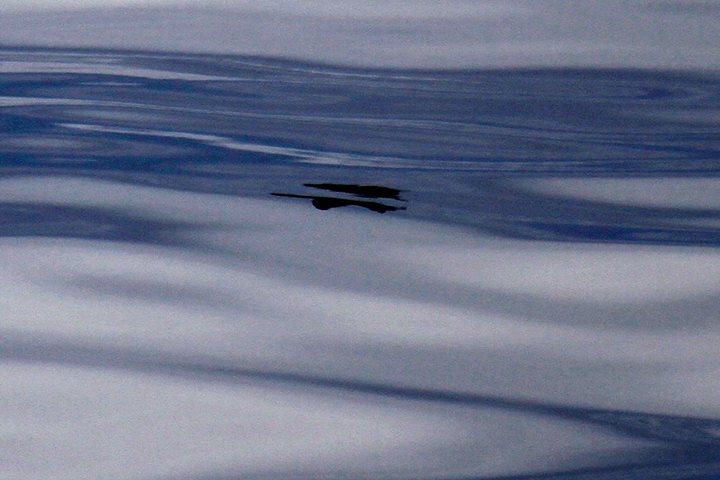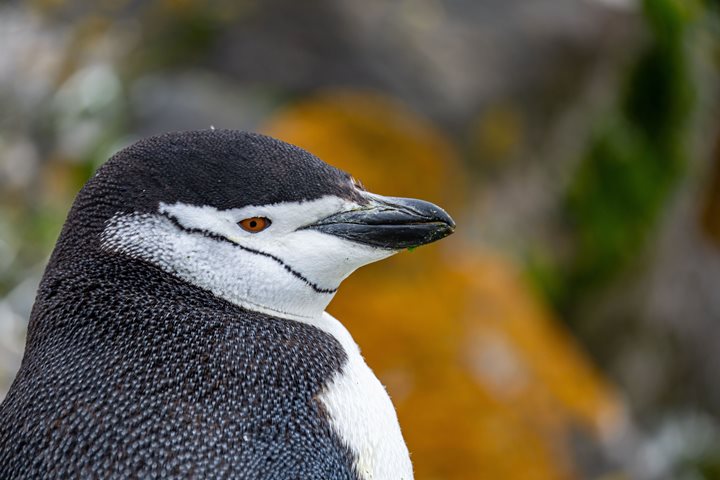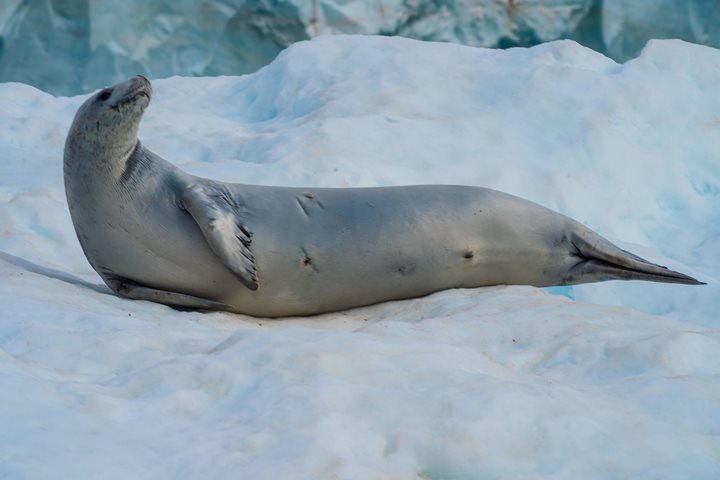A morning of Antarctic delights awaited us on Petermann Island. The air was dry and clear, the temperature moderate and the winds low. On the water, a variety of seals—Weddell, fur, and crabeater—and gorgeous icebergs were highlights of our Zodiac cruises. On land, bevvies of engaging gentoo penguins were first in line at the shore, but soon Adélies also came along, tobogganing across the snow. A colony of Antarctic shags also breed there, the chicks now well-grown and almost fledged. Here and there ice-smoothed bedrock protruded through the snow in whaleback ridges shot through with dark basaltic dykes, tracing the pathways of ancient glaciers. Down by the shore a lonely cross commemorates three men from the British Antarctic Survey who tragically lost their lives in the area in 1982. Overlooking the scene from the top of Megalestris Hill is a historic stone cairn, erected by the French expedition led by Jean-Baptiste Charcot which famously overwintered there in 1909. We stood by the shore imagining their expedition ship Pourquoi Pas? moored in the bay, waiting for the sea ice to freeze it fast and secure to the shore. We pictured the scientific huts built around the shore for observations and experiments in all aspects of early Antarctic science, with cables strung from structure to structure connecting them to an electricity generator, illuminating the Antarctic night. Across the sound the precipitous mountains of Booth Island and the Peninsula mainland made a stunning backdrop, with the occasional rumbling of glaciers heard as they descended to the sea.
Our return passage through the impossibly beautiful Lemaire Channel took us to the southern end of Anvers Island where the American research base Palmer Station is situated. The base manager Bob Farrell introduced us to the work of the station and the scientific programs which it supports, followed by tours of the station led by cheerful base staff. It has operated there since 1965, it is the smallest of the U.S.’s three Antarctic stations, housing (in compact quarters) up to 44 scientists and support workers, and is set in a magnificent location surrounded by small islands and the towering ice cliffs of the Marr Ice Piedmont. Our tours were regularly punctuated by the impressive sound of crashing ice plunging into the water.

